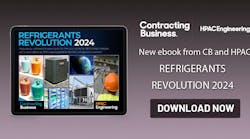Facilities where classes are taught, teachers hold offices hours and students try to learn have plenty of unique requirements. When it comes to the HVAC installations, you may see plenty of things you wouldn’t necessarily encounter in other structures.
Consulting-Specifying Engineer Magazine spoke with multiple experts, including Essi Najafi, principal of Global Engineering Solutions in Bethesda, Maryland, who said there is a stringent energy code and LEED requirements that must be met while at the same time having to fit within an “often antiquated infrastructure.”
This infrastructure includes central campus steam boilers, dormitories originally designed to use natural ventilation, and roof structures that were not designed to hold rooftop equipment. Modern energy code requirements are pushing design engineers away from steam systems, while the campus engineers still desire centrally located heating and cooling equipment for maintenance purposes. Additionally, recent changes to the IECC requirements for building envelope construction and sealing have made use of natural ventilation difficult, if not impossible.
Read more from this fascinating interview on HVAC in higher education on CSE Magazine’s website.









